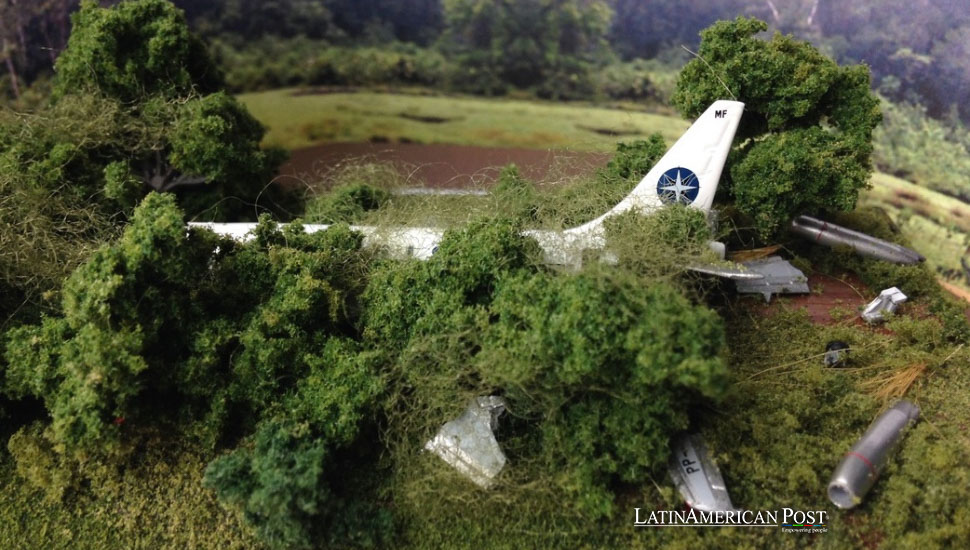Lost Over the Amazon: The Tragic Journey of Varig Flight 254

On September 3, 1989, a routine domestic flight in Brazil turned into a life-or-death struggle as the pilots of Varig Flight 254 became hopelessly lost over the Amazon jungle. This is how a small error led to a terrifying ordeal.
Varig 254’s Wrong Turn
On a bright, clear day over central Brazil, September 3, 1989, seemed perfect for flying. Varig, Brazil’s dominant airline, operated a domestic Boeing 737-200 flight from São Paulo, going north to Belém. Passengers embarked and disembarked at various stops, and the day’s routine suggested nothing unusual for what should have been the final 40-minute flight from Marabá to Belém.
However, the end of this journey would be anything but routine.
Varig Flight 254, now nearing the final leg of its journey, was piloted by a confident 32-year-old captain with a respectable 6,900 flight hours and a less experienced first officer, just beginning his career with under 900 hours of total flight time. The day was calm, and the skies were mostly clear, but one small, nearly invisible error would soon spiral into a catastrophic ordeal.
The confusion started innocently enough. As the pilots prepared for the final flight, they set their instruments based on the flight plan. But here was the crucial mistake: the captain, interpreting the flight plan, set the aircraft’s heading to 270 degrees, thinking he was correctly aligned for the northeast-bound destination of Belém. Instead, 270 degrees would take them west, deep into the Amazon jungle. Without realizing it, the aircraft was about to veer off course—by hundreds of miles.
The Perfect Storm of Navigational Errors and Human Judgment
The era before modern GPS navigation systems relied heavily on beacons, charts, and pilots’ instincts. On this fateful day, pilots of Varig 254 found themselves navigating through less sophisticated systems, relying on what they believed was good weather and essential navigational tools.
Shortly after takeoff, as the plane leveled off at 29,000 feet, the crew believed they were headed in the right direction. The pilots’ assumption that all was well was bolstered by the relative calm of the skies and their trust in the instruments. However, the mistake in the heading went unnoticed. Instead of heading northeast toward the Atlantic coast and the city of Belém, the Boeing 737 was now traveling westward into the vast, uncharted Amazon jungle.
Despite this glaring mistake, nothing immediately raised alarms in the cockpit. The first officer, less experienced and likely deferring to the senior captain, copied the instruments’ readings without question. At the time, there was no radar coverage in the vast Amazon, and as the miles ticked by, the pilots became more convinced they were on track.
It was only after 30 minutes—when the destination of Belém should have been visible—that confusion began to set in. As the pilots scanned the horizon, they saw no sign of the city. Even worse, attempts to contact air traffic control in Belém were met with only static. As they descended lower, assuming they had missed the town, the disorienting jungle canopy stretched endlessly below them, offering no clues to their actual position.
It was here that the crew began to realize a terrifying realization: they were lost.
Into the Depths of the Amazon
What followed was a series of increasingly desperate decisions. The pilots, still believing they had overflown Belém, reversed course in hopes of retracing their path. But they were flying further away from their intended destination, deeper into the dense Amazon rainforest. As darkness fell, their situation became even more dire.
At one point, the first officer tuned into a radio station playing a religious service. They assumed the signal was coming from Belém, but in another cruel twist, the transmission was actually from Goiânia, hundreds of kilometers to the south. The signal bounced off the ionosphere, leading the pilots astray. With every passing minute, their fuel reserves were dwindling, and the jungle below became a black void, impenetrable and deadly.
The aircraft’s systems began to shut down as the fuel gauges neared empty. One by one, the engines flamed out, leaving the Boeing 737 gliding silently over the rainforest. The captain finally informed the passengers that they would be making an emergency landing, describing the situation as a “navigation malfunction.” Panic gripped the cabin as passengers braced for impact in the total darkness.
At 8:50 p.m., after more than three hours of flying in the wrong direction, Flight 254 crashed into the treetops. The dense canopy tore off the wings, and the fuselage plummeted to the ground. Inside, passengers were thrown forward as seats collapsed and debris scattered. The crash killed eight people instantly, while others were left critically injured.
The nightmare was far from over for those who survived the initial impact. They were stranded deep in the jungle without communication and limited supplies. As the reality of their situation set in, the survivors faced an agonizing wait for rescue.
Passengers Fight to Stay Alive in the Jungle
In the immediate aftermath of the crash, 46 of the 54 passengers and crew had survived. However, they were now faced with the harrowing challenge of surviving in one of the most inhospitable environments on Earth. Trapped in the heart of the Amazon, with no clear idea of their location and no immediate sign of rescue, the survivors banded together to care for the injured and find water.
The crew activated the aircraft’s emergency locator transmitter (ELT), which required a liquid. With no water available, survivors resorted to melting ice and using urine to submerge the device, hoping the weak signal would reach rescuers. Hours turned into days, and with each passing moment, the hope of survival grew dimmer.
Unknown to the survivors, search and rescue teams were scouring the wrong area, believing the aircraft was somewhere near Belém. Two days after the crash, a small group of survivors, led by a forest surveyor, ventured out of the jungle and found a local farmer. The farmer, initially skeptical of their story, eventually helped transmit their location to authorities via ham radio.
On the third day, helicopters finally arrived, bringing food, water, and medical supplies. The rescue effort, however, was bittersweet. In the hours before help arrived, three more passengers succumbed to their injuries, bringing the final death toll to 12.
For the 42 survivors, the ordeal in the Amazon was a test of endurance and sheer will to live. The wreckage of Flight 254 was scattered across the jungle floor, a haunting reminder of the navigational error that led them so far off course. But despite the odds, the survivors had managed to hold on, enduring more than 48 hours lost in the wilderness before help arrived.
The tragic story of Varig Flight 254 remains one of the most infamous aviation disasters in Brazilian history. What started as a routine flight became a nightmare of confusion, navigational errors, and human judgment. The pilots’ initial mistake, compounded by a series of poor decisions, led to the loss of lives and a harrowing survival ordeal for the passengers and crew.
In the aftermath, investigators uncovered human error’s crucial role in the disaster. Recommendations included improving navigational systems, refining flight plans, and enhancing pilot training to prevent similar tragedies. While modern technology like GPS and advanced radar systems have made such accidents less likely today, the story of Varig 254 serves as a sobering reminder of how easily things can go wrong when small mistakes can snowball into catastrophe.
The survivors of Flight 254 faced an unimaginable ordeal. Trapped in the jungle and left to their own devices in a race against time, their courage and resilience stand as a testament to the strength of the human spirit in even the darkest of moments.





